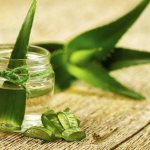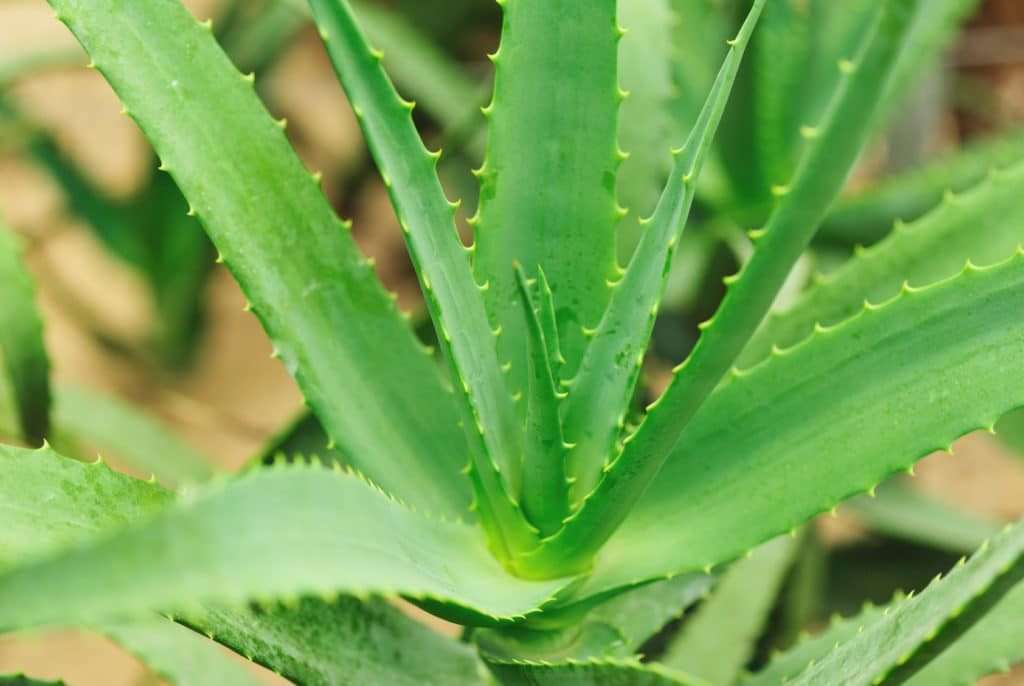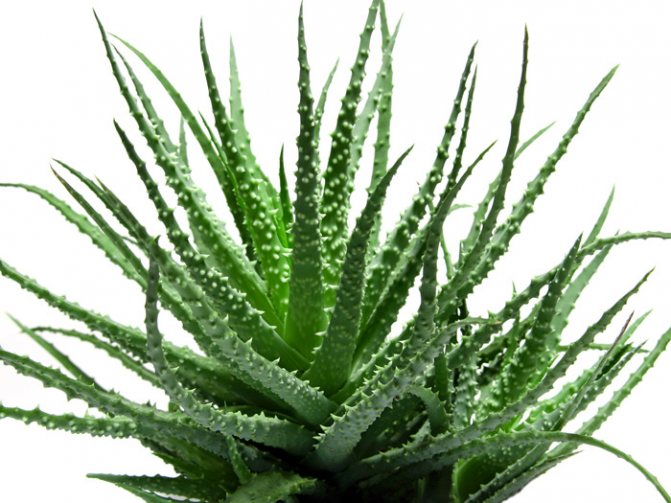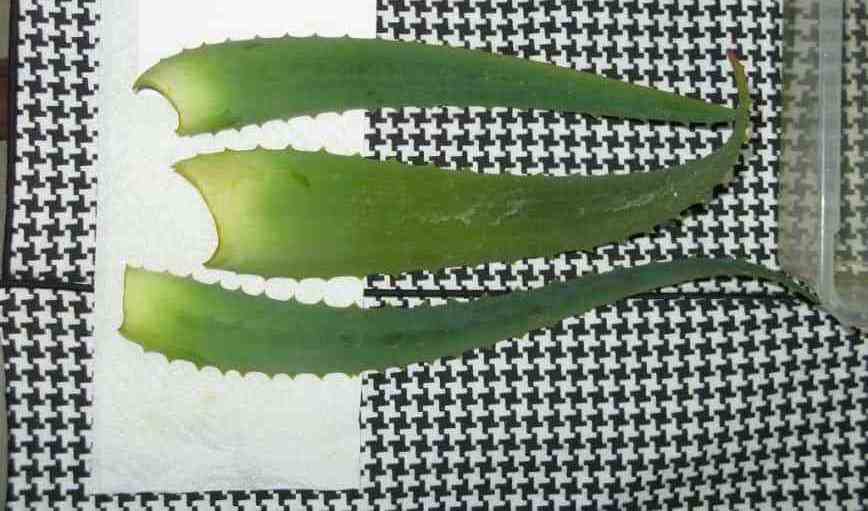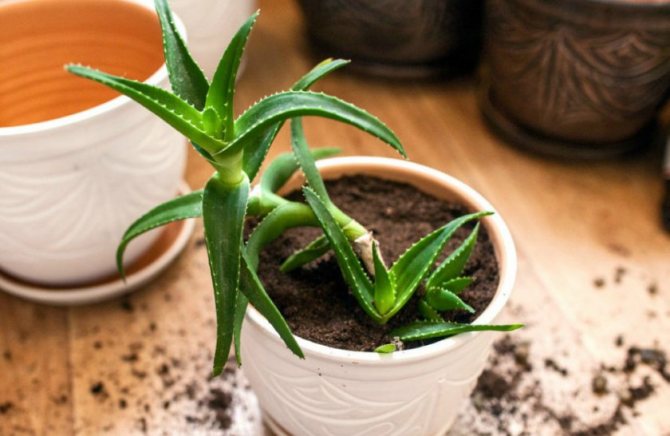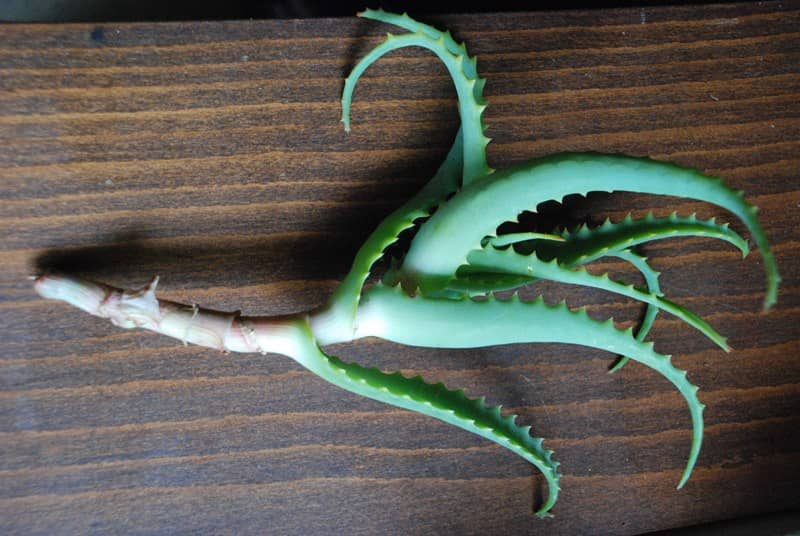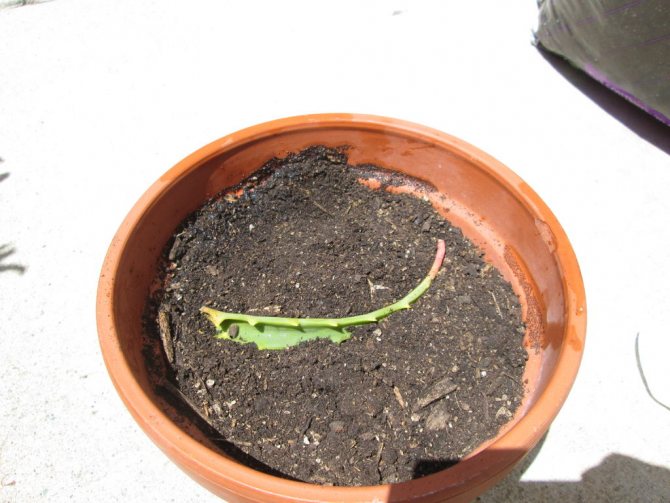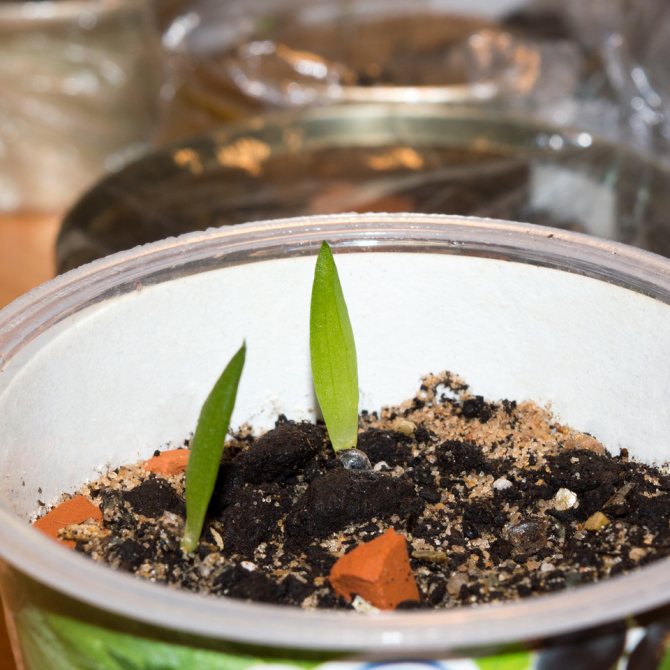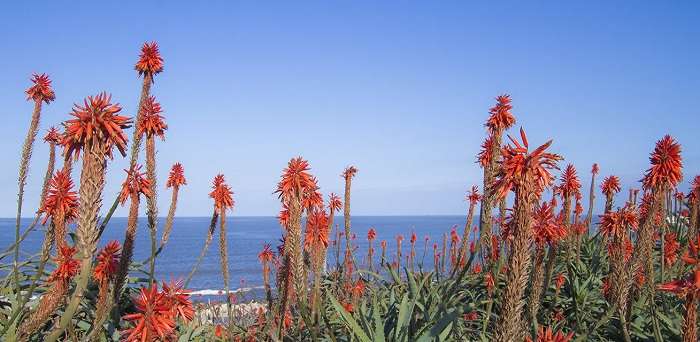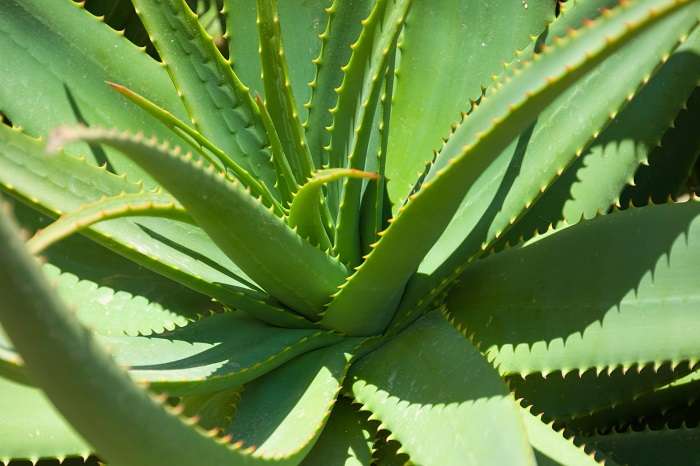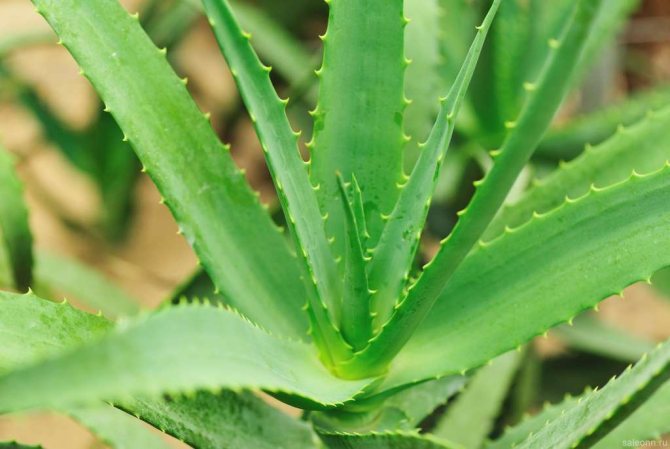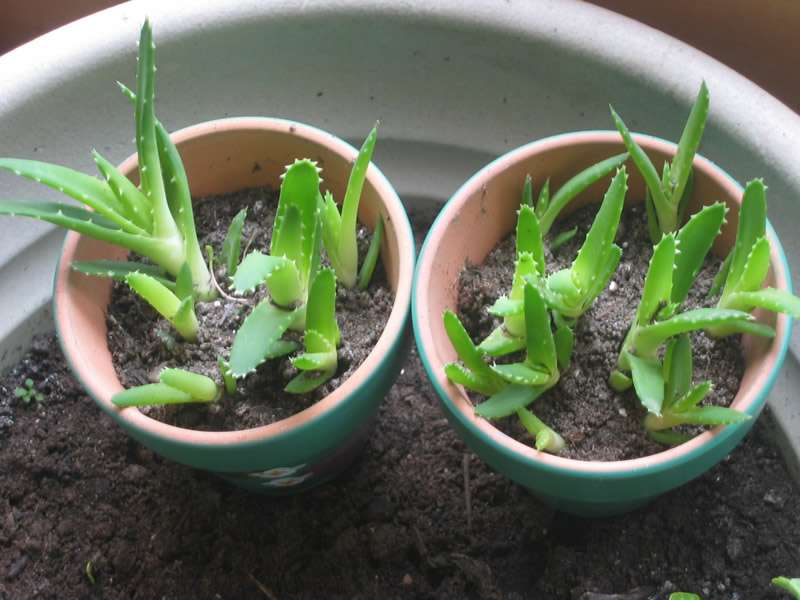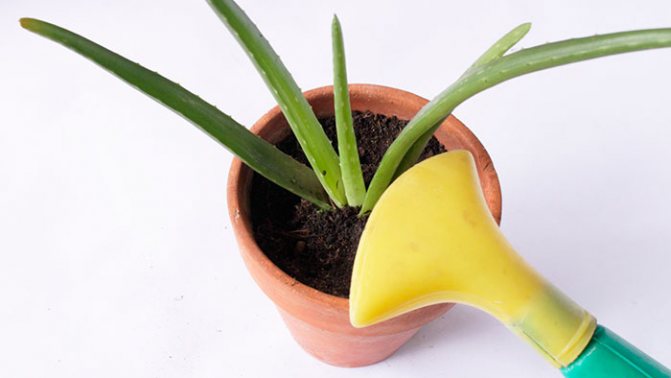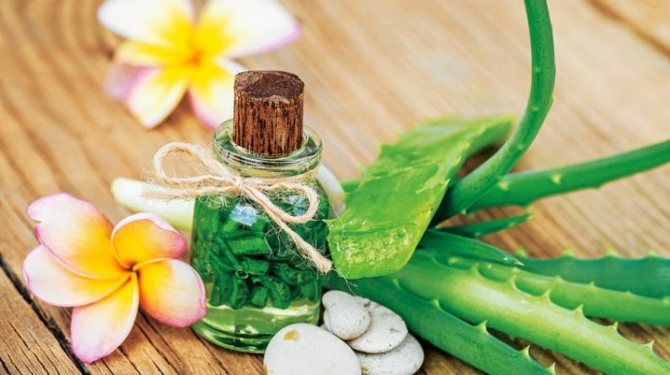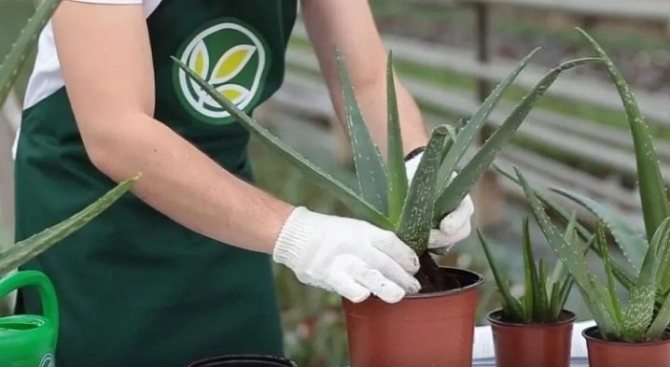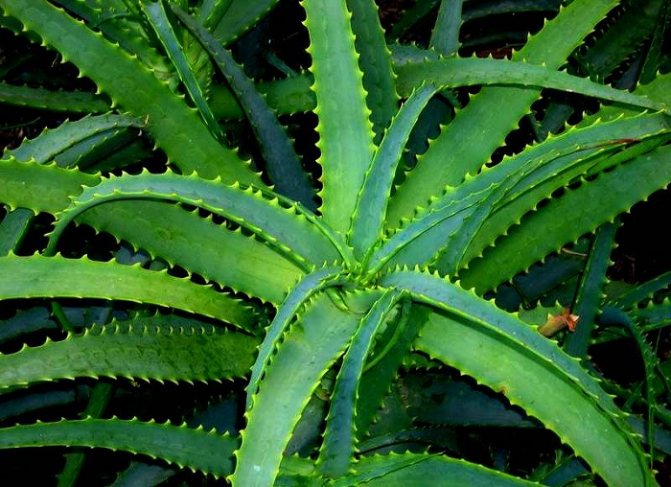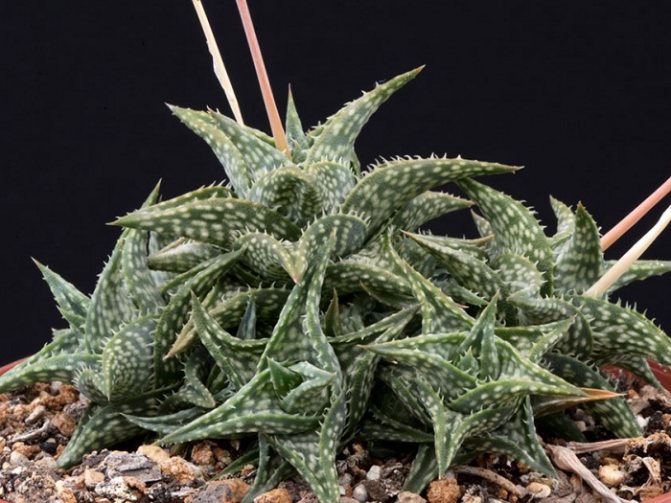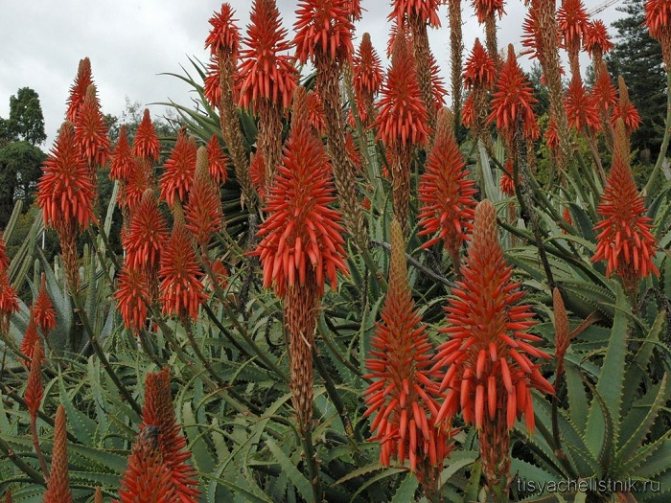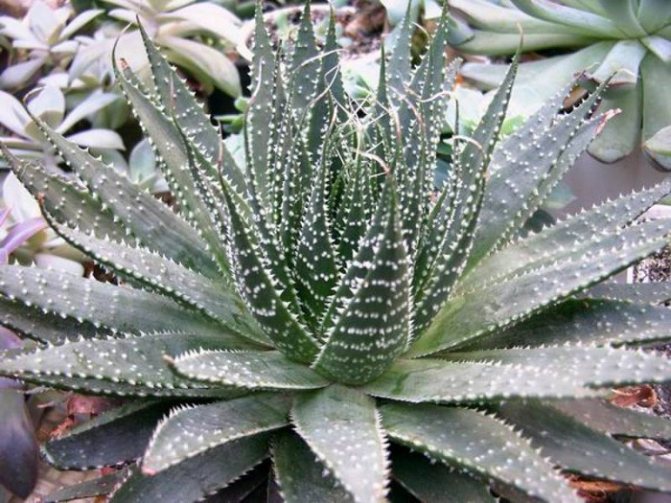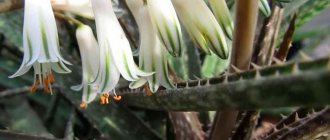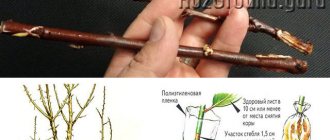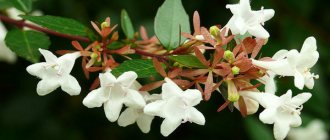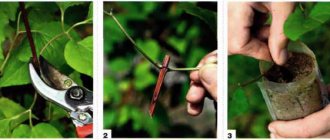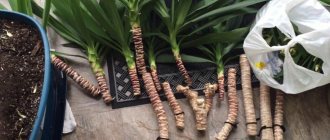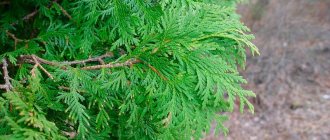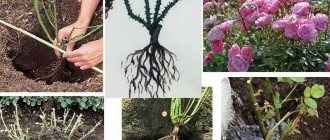Aloe is a succulent shrub native to Africa. It is known for an impressive number of useful properties and therefore is popular with flower growers in all countries. And although there are more than 250 varieties of aloe in the world, lovers of indoor plants prefer only a few of them.
The most common types are tree aloe or agave, folded, spinous and spotted aloe. Aloe cannot be called anything other than a natural healer and beautician. Mastering the simple procedure for propagating this flower will help you to use its beneficial properties in abundance.
There are several ways to breed aloe at home. We will consider them in this article.
Ground requirements
For a young aloe, a soil should be prepared that has the following characteristics:
- Loose. Moisture-free and good air permeability.
- Neutral or slightly acidic.
- High in iron.
The mixture should include sod and leafy soil, humus and sand. Sod soil should be taken twice as much compared to other components. Add some charcoal to the soil for disinfection and some small stones to make it friable. It is best to buy a special mixture for succulents and cacti... This substrate contains all the nutrients necessary for the development of a young plant.
Advice: Immediately before planting, you need to disinfect the soil - hold it in the oven for half an hour at a temperature of 90 ° C. At the bottom of the pot, be sure to pour a drainage layer of pebbles, expanded clay or small shards.
Outdoor growing conditions
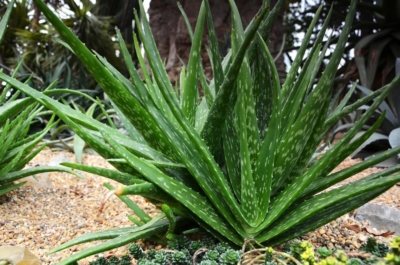
Even beginner growers will have no difficulty growing aloe Vera in an open area. The main thing here is to choose a well-lit area without drafts and cold winds. However, in central Russia and the northern regions, the agave will not take root. This is due to the short summer and frequent rains.
The plant is planted by any available method:
- cuttings;
- leaves;
- children;
- seedlings.
In this case, the soil should be well loosened and enriched with minerals, fertilizers in the form of humus or manure. The flower does not require specific follow-up care. It is enough to carry out systematic watering and free plantings from weeds.
Growing from a leaf without roots
How to plant an aloe tree leaf without roots? This is a very practical method, it requires:
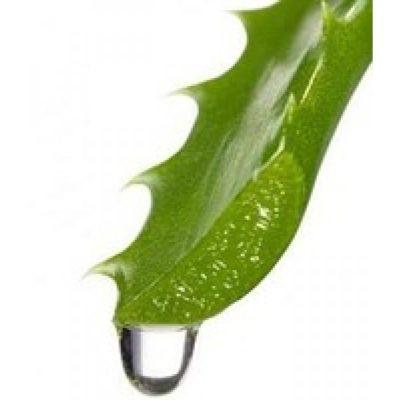

Pinch off an adult fleshy leaf at the very base.- Sprinkle the cut with activated carbon powder.
- Dry the planting material for three to five days.
- Place the drainage in the container, on top - the soil mixture.
- Spread a layer of coarse sand on the ground.
- Submerge the bottom of the leaf in a moist substrate to a depth of five centimeters.
- Cover with a glass jar.
- Spray the sand regularly as it dries.
- In a week, when the first roots appear, connect watering.
- When the leaf begins to grow back, transplant the young aloe bush into a pot filled with succulent soil.
How to propagate aloe leaves
For reproduction, you need to choose a healthy fleshy leaf from the bottom of the plant, carefully separate it with your hands from the stem at the very base (do not cut or tear off).After that, loosely wrap the sheet in paper and place in the refrigerator for several days until the edge of the sheet dries.
After drying, the leaf, like the apical stalk, is buried 2-3 cm either in wet sand or in a glass jar with water. Soak until the leaf is rooted, then transplant it into a large flower pot.
How to get a new bush from a scion?
Aloe babies are young underground shoots that grow at the base of the root... These processes have their own root system. Their other names are appendages, root shoots. The main advantage of the method is its lightness. Babies are formed naturally, you just need to carefully separate them from the main plant. Several bushes can be grown using this method.
How to grow a bush from a scion? First of all, it should be remembered that it takes a long time to form new appendages. It is better to carry out reproduction in the process of transplanting the main plant.
Selection and separation of children:
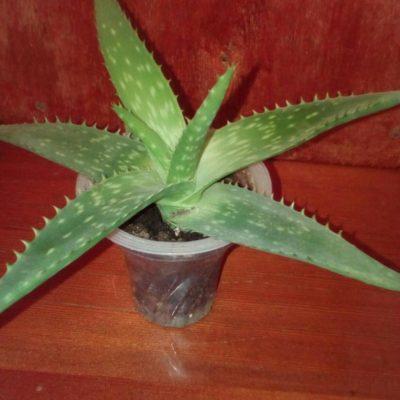

Moisten the soil in which the aloe grows.- Remove the plant from the pot and inspect.
- Determine the degree of maturity of the roots of the shoots.
- Use a sharp garden spatula to separate the appendages from the mother plant. Avoid damage to the root system. Leave the damaged processes to dry for several days.
Landing:
- Prepare containers.
- Place drainage on the bottom.
- Pour in a special substrate.
- Moisten the soil.
- Half an hour after watering, when the excess water drains off, plant the shoots. To do this, deepen them one centimeter into the ground.
- Water the first 10 days daily.
How quickly can aloe root? Usually, rooting takes place within a month and then new leaves appear.
We recommend watching a video about the reproduction of aloe by children:
Application of leaves and sap
The plant's extract and juice is used not only for medical purposes: its use has been noticed as an additional element in face and body creams.
Such a component visibly improves the condition of the skin around the eyes, making it fresh.
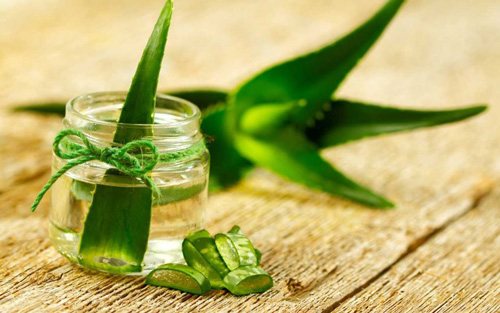

Consider several ways to use the plant:
- With baldness. Aloe vera mixed with honey works well for male pattern baldness. Walnuts are also added, kept in a warm place for 3 days, and then rubbed into the scalp. Many manufacturers have put their business on this component, adding it to medicated shampoos.
- For nasal instillation. A popular technique has been known for a long time: what child has not had aloe juice dripped into the nose? A small leaf of the plant is carefully cut from the bush, the juice is squeezed out onto a pipette, mixing it with water.
- Cosmetological application. Honey, plant sap, and oatmeal are excellent masks for aging skin. As shown in the video, it is recommended to do this procedure once a week.
In addition to these cases, aloe helps in the treatment of nervous disorders, tuberculosis, peptic ulcer disease, bronchial asthma.
The plant from the windowsill contains a lot of useful elements that are necessary for a person.
Propagation by cuttings
In most cases, propagation of aloe by cuttings ends in success. But given that young cuttings are not yet sufficiently strong, they can become the object of attacks from various diseases and pests. The main thing is to follow the instructions.
Preparing cuttings:
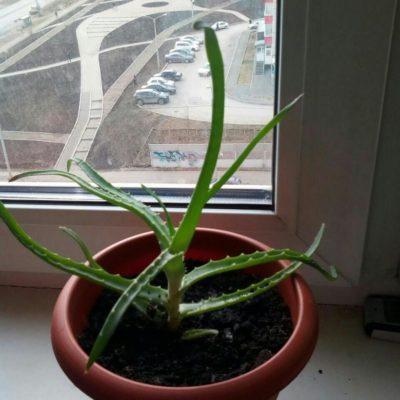

Choose a healthy mother plant.- Get a razor or sharp knife. Disinfect.
- Examine the plant. Find the side branches that run along the stem. Only straight shoots are suitable.
- Gently cut the cuttings about 10 centimeters long. Each shoot must have at least three pairs of leaves.
- Keep the cuttings in a dark place with 50% humidity for a week. The cut site should dry out.
Landing:
- Treat the cut points on the cuttings with chopped charcoal.
- Place a drainage layer in low containers.
- Pour the prepared soil and sprinkle with water.
- Plant the cuttings at a distance of five to seven centimeters from each other, deepening them into the soil by one or two centimeters. The lower leaves should barely touch the surface.
- A little fine gravel can be sprinkled over the ground to keep the stem stable.
- Place the container in a warm, bright place.
- Roots are formed within two to four weeks. It is important not to overmoisten the substrate. If gravel is poured on top, water should be less frequently.
- When the leaves appear, transplant the young plants into pots.
Important: Be sure to disinfect the container. Treat the clay pot with a superphosphate solution. Wash the plastic container under hot water and laundry soap. Keep ceramic dishes in a hot oven for 10 - 15 minutes.
How to propagate a flower correctly
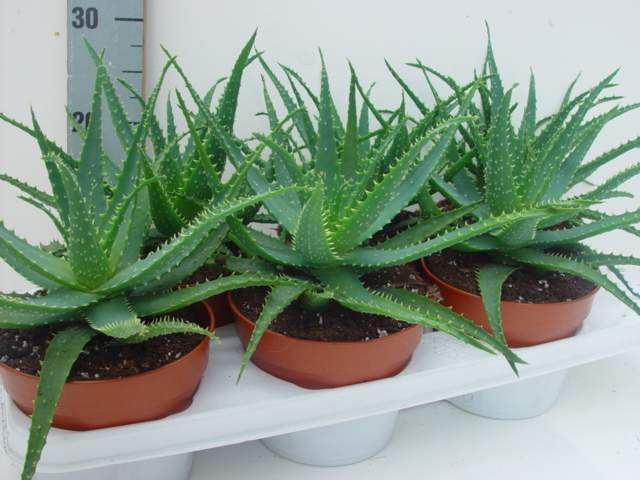

A characteristic feature of any type of aloe that adorn the homes of flower growers is the fleshy succulent leaves that resemble swords. In the course of growth, the leaves of the plant form rosettes. The edges of the leaves are jagged, spiked or framed with cilia. With good care, some types of home aloe produce small tubular flowers that are white, yellowish, or scarlet. It is not at all surprising that many lovers of home flowers would like to put such a beautiful and useful plant in their room, and therefore periodically ask themselves the question: "How quickly and relatively easy to propagate aloe?"
In its natural habitat, the plant can propagate by root shoots or seeds. Man, on the other hand, learned to breed aloe using cuttings, leaf pieces or the top of a plant. The methods are simple, each is good in its own way, and after considering all the breeding options for aloe, you can choose the most optimal one. Aloe is best propagated by cuttings or root shoots.
We breed aloe with young shoots
Young shoots of any plant are often called "babies". With proper flower care, young shoots appear even in a relatively young plant. The shoots have a soft green color and touching smooth leaves without thorns. Each "baby" has already acquired a ready-made root system and transplants relatively easily. To minimize the discomfort and difficulties of the transplant, you should first carry out some preparatory work.
- First, you should prepare the soil for planting a young plant. The soil should contain part of ordinary land, as well as parts of sheet or sod soil, coarse river sand and charcoal. Usually soil from the garden is mixed with the above natural disintegrants.
- You should also provide for a high-quality drainage system. For this purpose, at the bottom of the container into which the young shoot will be transplanted, it is necessary to lay out medium-sized expanded clay with a layer of 2-2.5 cm. In addition, the pot must have several holes so that there is a constant outflow of water in its microcosm.
How to plant aloe with children? This method is the most reliable and painless for the plant. When the preparatory work is completed, the agave with young shoots should be carefully removed from the pot. Manually or with a sharp knife, it is necessary to separate the "baby" from the mother plant.
IMPORTANT
The young shoot must be separated with a sufficient root system for independent life.
Carefully straighten the roots of the young shoot and place the "baby" in a new pot. Even if the young shoot is small, you should take a medium-sized container, because the plant grows quickly, and an extra transplant will not benefit it. Rooting in a new place of residence usually happens very quickly. Further growth and development of a young flower will not bring additional trouble to the owner.
Nuances of propagation of aloe by cuttings
This method of simple reproduction of aloe at home is popular with flower growers in those cases when it is necessary to propagate the plant in large quantities at once. It is best to choose a warm season for this procedure - spring or the first month of summer. In aloe, this period is considered the time of active growing season.
Side shoots are best suited for these purposes, which should be separated from the mother plant immediately near the base. Then the cut shoot must be left in a dark place for 3 to 5 days, it should dry out a little. Sprinkle the cut area with chopped charcoal.
While the stalk is at rest, you need to prepare a pot of soil. A small layer of drainage should be placed in the container at the bottom, and ordinary soil should be placed on top. The best option is the use of special soil for succulents. The top layer in the container should be coarse wet sand.
Next, the harvested cuttings are planted in a prepared container with well-moistened soil. The distance between the cuttings should not be less than 4 cm, and the planting depth should be about 1-1.5 cm. It is recommended to place the container with cuttings in a well-lit and ventilated room.
Important
The task at this stage is to monitor the moisture content of the sand. You can moisten the soil with a spray gun or very gentle watering. In dry sand, cuttings will not be able to take root.
After 3-4 weeks, new leaves should appear on the cuttings planted in a pot of sand. From this period, watering should be increased, and after another 2-3 weeks, the young agave is ready to be transplanted into a separate flowerpot.
Plant propagation procedure with stem cuttings or top
The propagation of aloe by the tip is a bit traumatic way for the mother flower, but it gives almost 100% the result of engraftment. This option is relevant for the rejuvenation of an old flower, which has already cut off part of the lower and side leaves.
To do this, you need to carefully cut off the top of the plant. Just as with propagation by cuttings, the upper part of the plant should be slightly dried. Then place in a container with water and put in a sunny place. After 30 days, the cutting will put down young healthy roots. When the roots have reached a length of 6-7 cm and have a strong elastic appearance, the cutting can be returned to freshly prepared soil. The planted flowers will begin to develop like normal plants.
Growing aloe from seeds
This method of propagation of aloe is the most laborious and long-lasting, but quite feasible. Many flower lovers love to watch how gradually a small sprout hatches from a tiny seed and begins to develop. For flower growers, all stages of plant growth are touching and fascinating. And although aloe grown from seed will acquire its natural appearance only after 1.5-2 years, fans of this method of propagation of aloe still exist.
If the grower is lucky and his aloe has released flowers, you can collect the resulting seeds. Ready-made plant seeds can also be purchased at specialized stores.
Planting seeds is best done in early spring. It is by this time that daylight hours noticeably increase, which is important for the normal germination of seeds.
Prepare a shallow container in advance and decide where it will be. The centenary is a very light-loving plant, so a lamp may be needed for additional lighting. An important point is also to maintain a warm air temperature in the room not lower than 22-23 C. The soil for planting seeds is the same as for adults. The main thing is that it is constantly wet.
The seeds are carefully sown into moist soil. Many indoor plant lovers recommend covering the seed container with transparent plastic wrap.The film will help maintain the necessary moisture and create a greenhouse effect, which is essential for any seed. It will take a long time to wait for seed germination - at least 1.5 months. If the sprouted seedlings in the container are too thick, they should be dived.
When the seedlings are 5-7 cm tall, they can be planted one at a time in small pots. It is advisable to place small aloes in a greenhouse, but in any case, maintain constant moisture and sunlight for them. And only with the arrival of next spring can flowers be transplanted into larger flowerpots. Further care for young plants does not differ from the usual ones.
How to plant the seeds?
At home, aloe rarely blooms. Seeds are quite difficult to obtain, so it is best to purchase them in a specialized store.
Cons of the method:
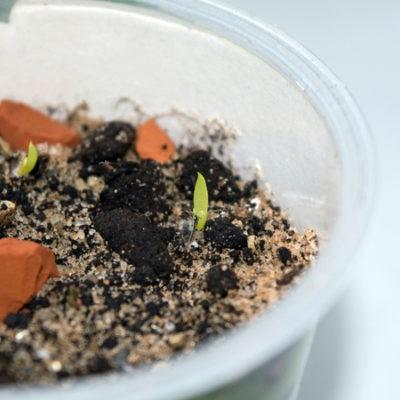

High level of difficulty. It takes a lot of effort.- Long duration of the procedure. It takes a year to get a new plant.
Positive sides:
- The method allows you to get many new copies at the same time.
- The survival rate of plants is much higher than with cuttings or propagation by shoots.
The procedure is carried out in late February - early March.
Algorithm of actions:
- Prepare a soil suitable for this type of plant.
- Pour soil into a low container.
- Moisten the soil.
- Place the seeds on the surface, sprinkle with a layer of sand no more than one centimeter high.
- Cover the container with foil or glass.
- Maintain the room temperature at least + 21 ° C. Moisten the soil moderately and regularly, avoiding drying out.
- With the appearance of the first shoots, gradually remove the shelter. Spray the sprouts with a spray bottle.
- When the seedlings have three to four leaves, transplant them into containers no more than five centimeters high.
Attention: After a year, young specimens will fully grow stronger. They should be placed in a larger pot.
Aloe vera seeds: reproduction at home
Whatever one may say, but the most lengthy, dreary and laborious process of aloe breeding is considered to be its sowing in the ground with seeds. However, since the plant reproduces in nature in this way, it is worth getting to know this method better, and suddenly someone has both time and the desire to tinker.
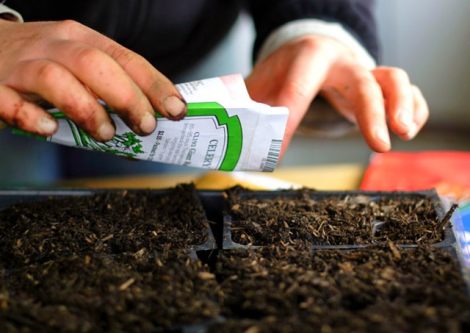

- The process should start at the end of February, or at the very beginning of March.
- It is worth creating suitable conditions in the apartment, because the air temperature should not fluctuate much in the range of twenty-one degrees.
- Mix leaf and turf soil, in a one-to-one ratio, and add two parts of river clean sand.
- Aloe seeds are sown in moist soil and watered periodically.
- It will be necessary to dive the seedlings, using the same soil, and after a year, arrange for them to be transshipped.
Using the top of the flower
The method has several advantages:
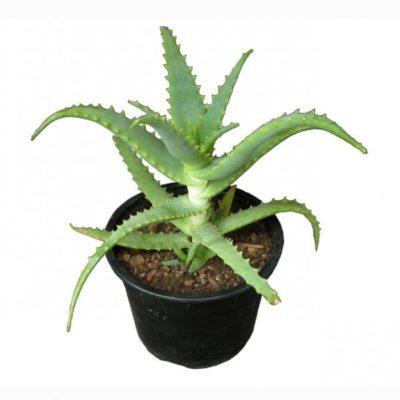

This is the fastest way to reproduce aloe.- Available even for novice florists.
- The rooting process can be controlled because it takes place in water.
How to propagate aloe tree at home using the top of the plant?
Procedure:
- Cut off the top of the aloe that contains at least seven healthy leaves.
- Place the lower end in phytohormone growth for 30 minutes.
- Place the top in a container of warm water.
- When the first roots appear, plant in a prepared pot with moistened soil.
Description of the plant
Aloe vera (or folk agave) is a large tree-like evergreen plant with a thick erect stem that grows up to a meter in height at home. In the lower part it has numerous annular scars after fallen leaves. On the sides of the stem are alternately xiphoid fleshy greenish-gray leaves with drooping ends. Leaves grow up to 40 cm in length, are seated on both sides with thorns.With their wide base, they embrace, as if hugging the stem.
The plant blooms at home very rarely - once every 10-20 years, but very effectively. The centenary throws up high, powerful peduncles, on the top of which there are tubular flowers collected in an ear or panicle. The shade of flowers can be different - yellow, orange, red, scarlet, pink, very rarely white.
Care after landing
- Immediately after planting, the aloe should be placed in a cool place, protected from direct sunlight. Then transfer to a sunny windowsill.
- Water once or twice a week, waiting for the topsoil to dry. Use warm, settled water.
- To remove accumulated dust, wipe the leaves with a damp cloth. Do not spray.
- Maintain the indoor temperature at least + 20 ° C in spring and summer and at least + 14 ° C in winter.
- Regularly ventilate the room where the flower is located.
- If, when planting the plant, special soil was used for succulents or cacti, no fertilizing is required for eight to nine months after planting.
- Examine the young agave for pests or diseases. If you find scale insects or aphids on leaf plates, wipe them with a piece of cotton wool soaked in alcohol. Or sprinkle with garlic tincture.
How to care for an agave at home is described here.
Our experts have prepared for you other articles about the tree-like aloe:
- Traditional medicine recipes with an agave.
- What is the difference between aloe and agave?
- Features flowering agave.
- The healing properties of the agave.
Young aloe care
As we have seen, aloe reproduces in many ways. And the florist can choose a method that matches his abilities and desires. The hardest part about propagating a plant is to root it properly. After going through this process, the plant can be looked after as an adult.
It is worth remembering all the features of the plant, such as love for light, warmth and moisture. But at the same time, do not overdo it with any of the above. In an excessively bright light, aloe, although with a low probability, can still get burned and start to hurt.
In an insufficiently lit place, aloe also feels uncomfortable: the leaves will begin to fade, and the plant itself will unnaturally stretch. And with a combination of excessive watering and heat, the flower will wither and rot.
The recommended watering regime in the summer is 1-2 times a week. In winter, watering is reduced to a couple of times a month. For better growth and development of aloe, the plant needs to be fed with fertilizer for succulents from April to September.
To breed aloe at home and grow it is an easy task that even a novice flower lover will have to handle. There is a lot of useful information on the network, as well as training videos that will always come to your aid in a difficult situation. Show patience, care and love for this plant. And in return he will give you all his valuable healing properties.
What if it doesn't take root?
There may be several reasons why a young plant does not take root. Let's consider them.
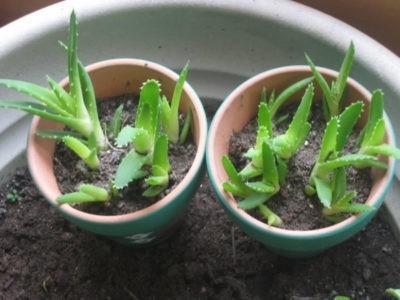

Poor quality planting material... If a leaf or stalk was taken from a diseased aloe, it is unlikely to take root.- Incorrectly selected soil... You need to change the substrate: make up the right potting mix or buy a ready-made one. A special land suitable for cacti.
- Improper care... Perhaps, there is waterlogging of the soil. Aloe does not tolerate excessive watering. The substrate should be moistened only after drying.
Features of the reproduction of subspecies of indoor aloe
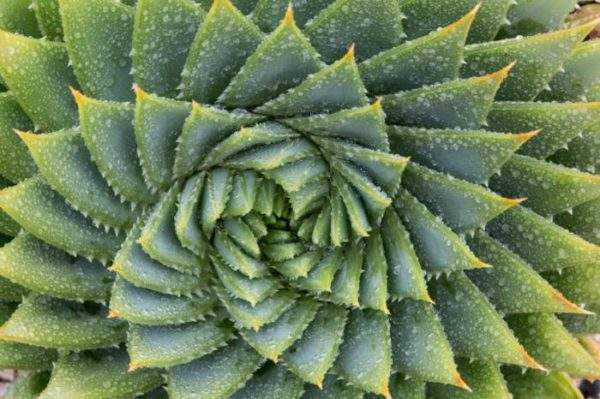

Aloe can become the main decoration of the interior.
There are about three hundred subspecies of culture. Only four are cultivated at home:
- "Tree-like";
- "Motley";
- aloe vera";
- "Spinous".
"Tree" representative (agave)
It got its name from the highly developed trunk.Pointed leaves are silvery in color. Compliance with all conditions of care will help grow a giant aloe - more than 1 meter long.
The culture is native to South Africa. In natural conditions, it grows in the desert. It is widely used to treat diseases of the gastrointestinal tract, skin and injuries.
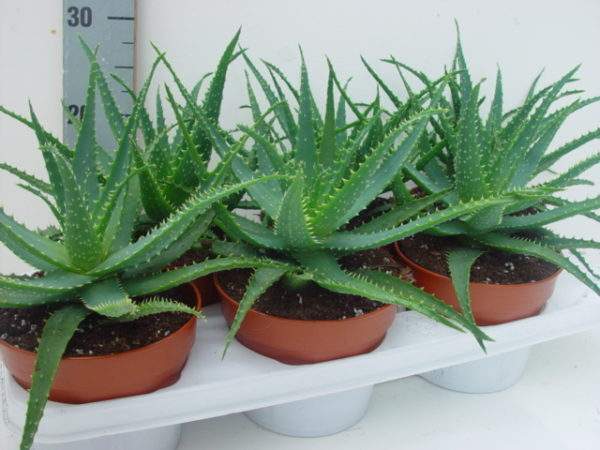

"Tree-like" aloe.
Propagated by vegetative method - cuttings or children. Forms inflorescences very rarely. The intensive development of the branches allows the plant parts to be used repeatedly for reproduction.
Aloe "Motley"
Reaches no more than thirty centimeters in length. The leaves have a three-level, stepped shape. Differs in a bright shade of dark leaves. Light spots are clearly separated on a green background. Due to its unusual coloring, the subspecies was named “tiger”.
As they grow older, the leaves of the triangular shape acquire a golden color. The first buds can appear at the age of four. Several bright orange inflorescences are formed on the emerging shoot.
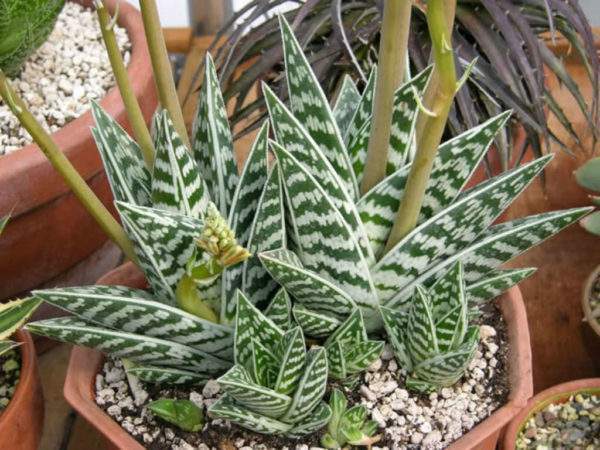

"Motley" aloe.
The decorative type of aloe reproduces by lateral and apical shoots.
Aloe vera"
Grows naturally in the Canary Islands. The shrub is popular for its massive stems and long leaves. Aloe juice has a similar chemical composition to the "tree" representative. Parts of the plant are widely used in folk medicine.
Culture tends to adapt to a long dry period. As the earthen coma dries, the flower protects the pores. Without moistening the soil, aloe can retain its decorative effect for a long time.
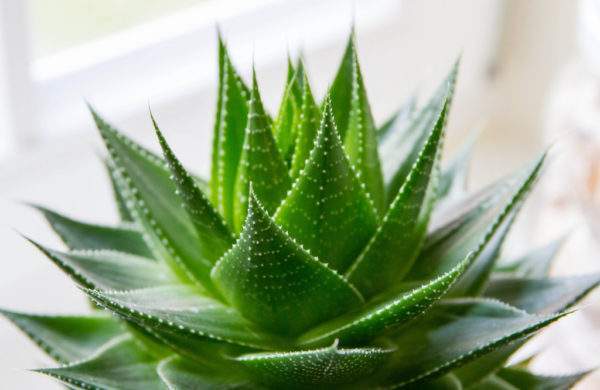

Aloe vera".
On a long peduncle, cysts of scarlet and yellow inflorescences are formed. The subspecies is propagated by seeds, cuttings and children.
Spinty aloe
A group of fleshy leaves with a white border forms a rosette with an average diameter of 10 centimeters.
An adult plant should be chosen for propagation. The best way to spread is by layering. Massive leaves can obscure babies. From insufficient lighting and air circulation, small aloes die. It is necessary to separate the planting material as early as possible from the mother culture.
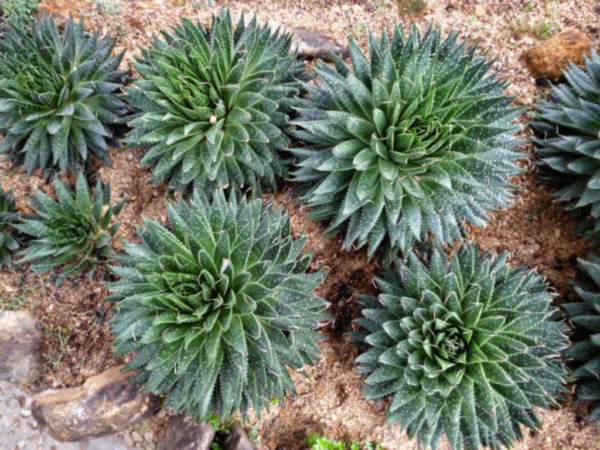

"Spinty" aloe.
Detailed information on breeding methods can be found in the video:
Tips on how to breed succulent plants
Professional florists recommend focusing on the following nuances of growing aloe:
- an adult, mature plant should stand on a windowsill, lit most of the day;
- in spring and summer, the agave is watered more often, in winter - as rarely as possible;
- aloe needs to be fed annually with mineral complexes and humus;
- if it was not possible to get rid of scale insects and mealybugs within 5 days with the help of insecticides, aloe must be immediately transplanted into new soil;
- once a season, the agave needs to be sprayed with Fitosporin.
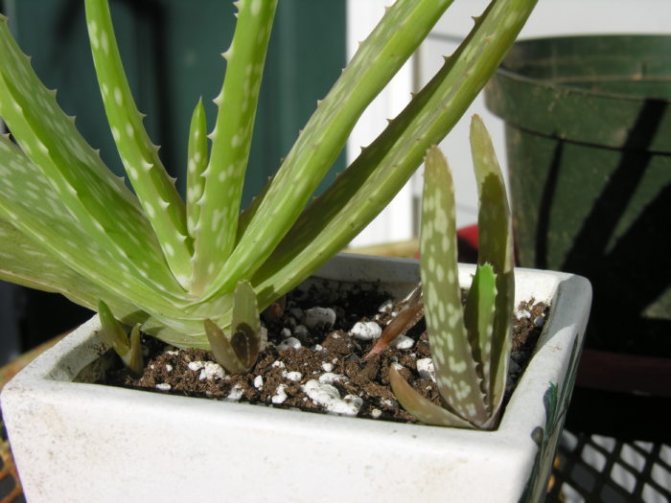

5 / 5 ( 1 voice)

